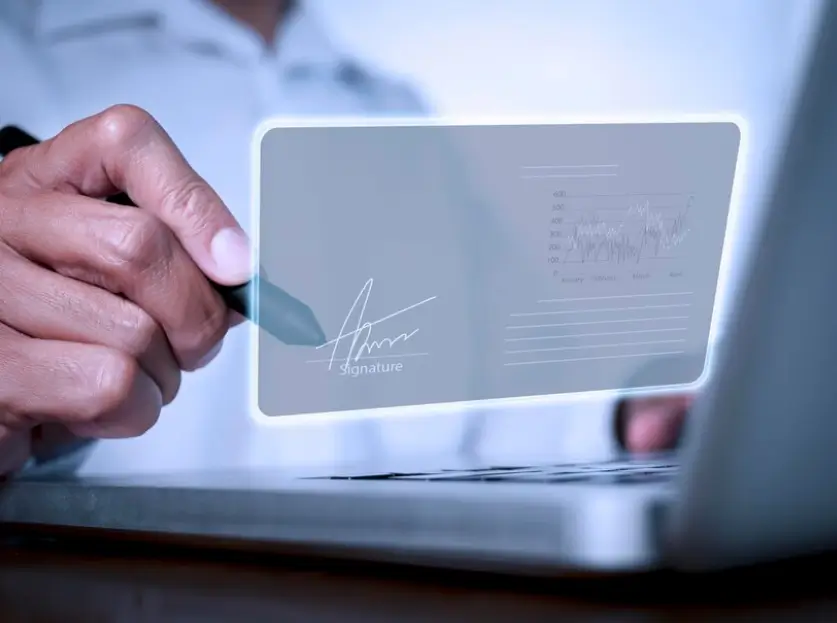As more companies adopt digital transformation, it is crucial for workflows to incorporate electronic signatures. E-signatures provide secure document handling, expedite processes, and remove bottlenecks caused by paper-based processes. This write-up will discuss electronic signatures’ benefits, best deployment practices, and a step-by-step tutorial on incorporating e-signature software into your regular business processes.
Why Electronic Signatures are Important?

Many industries have seen a sharp increase in the use of electronic signatures as companies search for more effective ways to handle contracts and paperwork. Electronic signatures, which replace traditional handwritten signatures, help businesses save time, reduce paperwork, and guarantee regulatory compliance.
Benefits of Using Electronic Signatures
- Quicker Turnaround: When using electronic signatures, documents can be signed and processed in minutes rather than days or weeks.
- Savings: Significant savings exist when printing, shipping, and storage expenses are eliminated.
- Security: Legally binding and equipped with audit trails and encryption, electronic signatures provide better protection than paper-based methods.
- Convenience: Any device can be used to complete signatures from any location.
- Eco-friendly: Cutting less on paper use helps maintain a sustainable ecosystem.
Why Choose Electronic Signatures?
A seamless shift to a digital signing procedure heavily depends on selecting a suitable partner for electronic signature solutions. These suppliers offer a range of features that can be customized to your business’s specific requirements. A carefully selected e-signature system will integrate into your workflow, guaranteeing security and effectiveness.
Top Reasons to Choose E-Signature Platforms
- Compliance: To guarantee that your signatures are enforceable in court, choose an e-signature platform that complies with laws like the ESIGN Act and eIDAS.
- Scalability: Electronic signature solution providers offer scalable solutions that expand your business regardless of your company’s size.
- Automation: Many e-signature programs include workflow automation, which lowers human labor and boosts output overall.
What Are eSignature Solution Workflows?
The systematic procedures involved in electronically signing, delivering, and managing documents are called eSignature workflows. By incorporating the signature procedure into your current business processes, you can integrate electronic signatures into your workflow and ensure that all papers go smoothly from one step to the next.
Key Features of eSignature Workflows
- Template Creation: Pre-built templates can be set up to standardize commonly used papers.
- Automated Reminders: Lower the likelihood of delays by automatically reminding signers.
- Audit Trails: Monitor document status and record every action taken using the e-signature system.
- Cloud Storage: Signed documents are conveniently and safely kept on the cloud.
When integrating electronic signature technology into your workflow, it’s important to comprehend how these processes work and ensure they’re tailored to your company’s requirements.
10 Steps to Implement Electronic Signatures in Your Workflow
Electronic signatures can be easy to integrate into your workflow. Here’s a helpful primer to get you going:
1. Identify the Use Cases
First, find out where electronic signatures can be most useful. This might be seen in client agreements, HR paperwork, or sales contracts. Determining the use cases guarantees that the e-signature solutions you invest in yield the most return on your investment.
2. Choose the Right E-Signature Solution Provider
Compare the nuanced features each electronic signature solution provider offers to choose the one that best suits your needs. Pay close attention to elements such as scalability, compliance, and software integrations with your existing infrastructure.
3. Assess Workflow Integration
Consider integrating electronic signatures into your current workflow. Are eSignature workflows supported by the document management system you now use? Verify if your selected solution can be quickly integrated without interfering with ongoing operations.
4. Create Document Templates
Using the platform, create templates for commonly used documents, including purchase orders or contracts. Time will be saved, and consistency will be maintained throughout your documents.
5. Set Up User Roles and Permissions
Assign various users in your organization roles. This makes it clearer who can draft, transmit, and sign documents. This step improves your e-signature system’s security as well.
6. Train Your Team
Organize training sessions to ensure your staff is proficient in using the e-signature systems. An informed team will facilitate a more seamless and effective transfer.
7. Implement Audit Trails
Make sure the platform has audit trails that allow you to follow the status of the documents and the activities that each signer has made. Accountability and openness are thus guaranteed.
8. Automate Reminders and Notifications
Set up automated reminders for signers to guarantee that documents are signed on time. Notifications can also be sent to the various parties after a signed document to keep everyone informed.
9. Test the System
Test the e-signature system with a small number of pilot papers before implementing it throughout the organization to ensure it is functioning as intended.
10. Launch and Monitor
After they are in place, monitor how well your workflow is using electronic signatures. Keep track of the time and money you are saving, and alter the process as necessary to make it even more efficient.
Summing up
Introducing electronic signatures into your workflow can significantly improve productivity and expedite document handling for organizations. You may ensure that integrating electronic signature technology into your process goes well by choosing the appropriate electronic signature solution providers, comprehending eSignature procedures, and adhering to the above-described implementation steps.
E-signature platforms provide a safe, scalable, and legally binding method for managing signatures, whether you’re handling sales agreements, employee contracts, or client approvals. While maintaining security and compliance, e-signature systems can significantly reduce the time and expense involved in paper-based operations.



